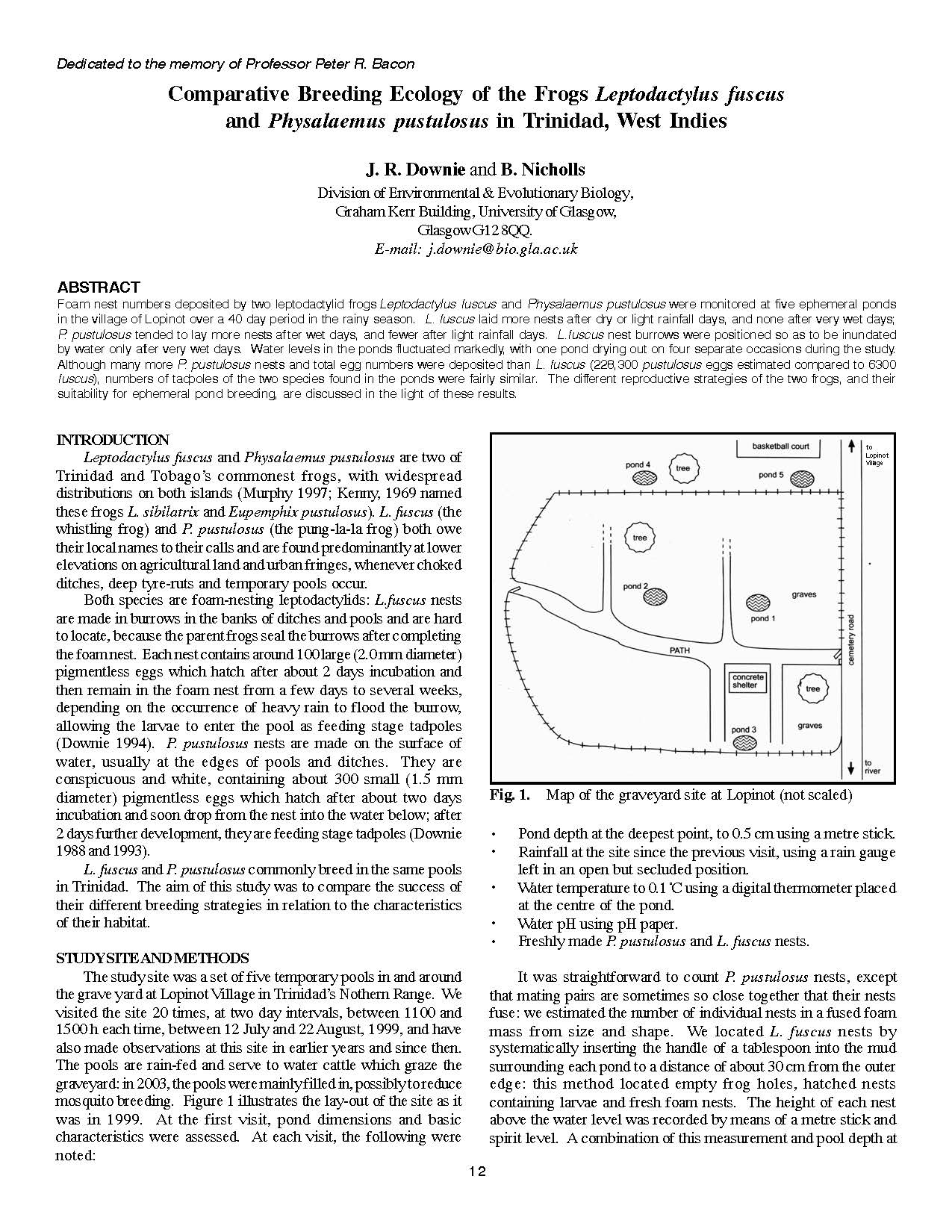Comparative Breeding Ecology of the Frogs Leptodactylus fuscus and Physalaemus pustulosus in Trinidad, West Indies
Keywords:
Frogs, Leptodactylus fuscus, Physalaemus pustulosus, Breeding Ecology, Foam nesting, Lopinot VillageAbstract
Foam nest numbers deposited by two leptodactylid frogs Leptodactylus fuscus and Physalaemus pustulosus were monitored at five ephemeral ponds in the village of Lopinot over a 40 day period in the rainy season. L. fuscus laid more nests after dry or light rainfall days, and none after very wet days; P. pustulosus tended to lay more nests after wet days, and fewer after light rainfall days. L.fuscus nest burrows were positioned so as to be inundated by water only after very wet days. Water levels in the ponds fluctuated markedly, with one pond drying out on four separate occasions during the study.
Although many more P. pustulosus nests and total egg numbers were deposited than L. fuscus (228,300 pustulosus eggs estimated compared to 6300 fuscus), numbers of tadpoles of the two species found in the ponds were fairly similar. The different reproductive strategies of the two frogs, and their suitability for ephemeral pond breeding, are discussed in the light of these results.

